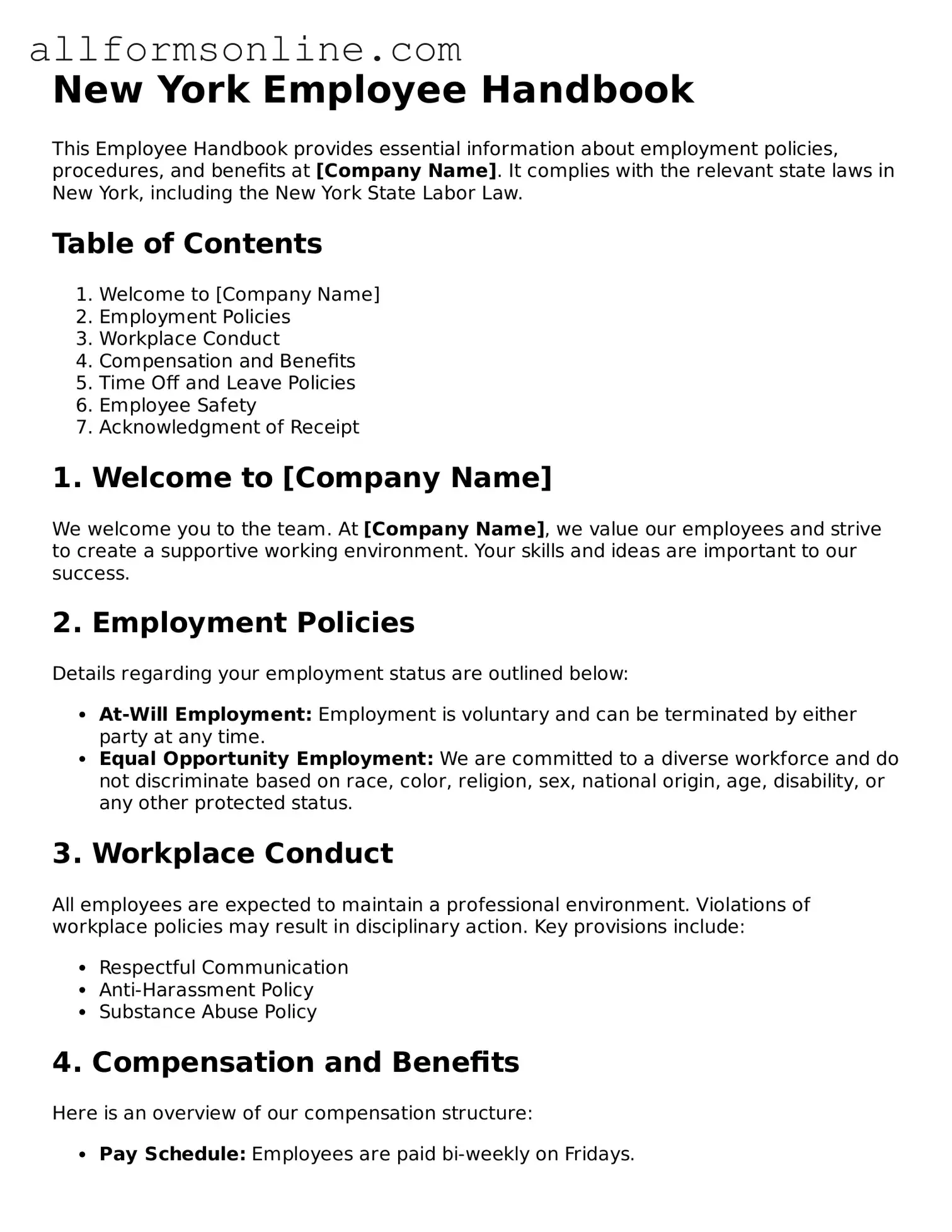What is the purpose of the New York Employee Handbook form?
The New York Employee Handbook form serves as a comprehensive guide for employees. It outlines company policies, procedures, and expectations. This document helps ensure that all employees understand their rights and responsibilities within the workplace, fostering a positive and informed work environment.
Who is required to have an Employee Handbook in New York?
While not mandated by law, it is highly recommended for all employers in New York to have an Employee Handbook. This includes businesses of all sizes. Having a handbook can help clarify workplace policies and protect the organization from potential legal issues.
What key topics should be included in the Employee Handbook?
An effective Employee Handbook should cover a variety of topics. These typically include company mission and values, employment policies, anti-discrimination and harassment policies, attendance and leave policies, benefits information, and procedures for reporting issues. Each section should be clear and concise to ensure understanding.
How often should the Employee Handbook be updated?
How can employees access the Employee Handbook?
Employees should have easy access to the Employee Handbook. It can be distributed in printed form, made available on the company intranet, or sent via email. Ensuring that all employees receive a copy and understand its contents is crucial for compliance and transparency.
What should an employee do if they have questions about the Employee Handbook?
If an employee has questions regarding the Employee Handbook, they should feel encouraged to reach out to their supervisor or the Human Resources department. Open communication is vital. Employees deserve clarity on any policies or procedures that may affect their work experience.
